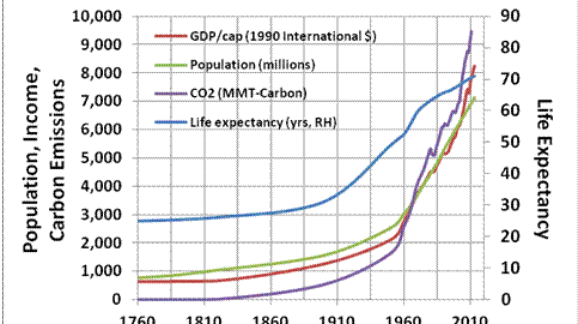Doomsday Clockamamie

“It is still three minutes to midnight,” proclaims The Bulletin of the Atomic Scientists in their latest “Doomsday Clock” report. The Atomic Scientists welcome the Iran nuclear deal and the Paris climate agreement as “incremental moves” towards a more “sustainable” planet. Nonetheless, they warn, “the hands of the Doomsday Clock must remain at three minutes to midnight, the closest they've been to catastrophe since the early days of above-ground hydrogen bomb testing.”
The notion that men in white lab coats can calculate the imminence or likelihood of global apocalypse is almost too ludicrous to entertain. Nonetheless, let us proceed as if the Atomic Scientists were engaged in legitimate research rather a propaganda exercise.
Way back in 1953, citing the first H-bomb tests by the United States and the Soviet Union, the Atomic Scientists said the world was only two minutes to midnight—the fateful hour, at the end of the countdown, when, supposedly, all hell breaks loose. Today, they claim the world is three minutes from midnight. That’s loopy. How can the world be minutes from destruction for more than 60 years?
Since 1949, the Doomsday Clock has never been more than 17 minutes from the Stroke of Doom. The driving factors in every case were nuclear testing, the arms race, and the success or failure of arms control negotiations.
Clearly, the Atomic Scientists have been exaggerating the likelihood of nuclear conflagration for decades. Indeed, one could even argue that the very arms race they have decried for the past 67 years actually helped limit armed conflict by making a third world war unacceptably costly to the Soviet Union and Mao’s China.
What’s novel about the latest iteration of the Doomsday Clock is that the Atomic Scientists now include climate change along with nuclear weapons as “humanity’s two most pressing existential threats.” But how can climate change be pushing us ever closer to the Eve of Destruction when the state of the world keeps improving?
Over the past 60-plus years, global population tripled, global per capita income quadrupled, and global average life expectancy increased by 20 years, economist Indur Goklany observes. Population, per capita income, and life expectancy are the best overall measures of human health and welfare. Positive trends in all three metrics indicate an increasingly “sustainable” civilization.

Source: Goklany (2015)
Goklany documents several other important positive trends:
- During the past quarter century, despite a 35% (1.9 billion-person) increase in global population, the number of people living in chronic hunger declined by 216 million.
- Even in low-income counties, life expectancy increased from 42 years in 1960 to 62 years today.
- There were 947 million fewer people living in absolute poverty in 2011 than in 1981, despite a population increase of 2.5 billion people in developing countries.
- Global deaths and death rates related to extreme weather declined by 93% and 98%, respectively, since the 1920s.
- From 1961 to 2013, yields of cereal crops increased by 85% in the world’s poorest countries, and 185% worldwide.
- Between 1990 and 2012, an additional 2.3 billion people got access to clean water and 2 billion people got access to improved sanitation.
- From 1900 to 2012, the global mortality rate for malaria declined by 95.4%.
If the Doomsday Clock had any validity at all, facts like those would move the minute hand away from the stroke of midnight.
The Atomic Scientists fret that even if all countries fulfill their voluntary emission reduction commitments under the Paris climate treaty, the world would still fall far short of the treaty’s goal of limiting global warming to 2°C above pre-industrial temperatures. Well, that assumes the computer models used by the Intergovernmental Panel on Climate Change (IPCC) to predict global warming are accurate. They are not.

Source: John Christy
Here’s more good news the Atomic Scientists have probably never considered. The warming effect of anthropogenic greenhouse gases is supposed to be strongest in the bulk atmosphere (lower troposphere). Over the past 37 years, the warming rate in the lower troposphere is about 0.114°C per decade in the University of Alabama in Huntsville (UAH) satellite record.

Source: John Christy and Roy Spencer
What that means is the climate system is already on track to keep global warming under 2°C. As the UAH atmospheric science department recently explained:
If that trend was to continue for another 63 years, the composite warming for the globe would be 1.1°C (about 2 degrees Fahrenheit) for the century, [John] Christy said. That would put the average global temperature change over 100 years well under the 2.0°C (3.6 degrees F) goal set recently at the climate change summit in Paris.